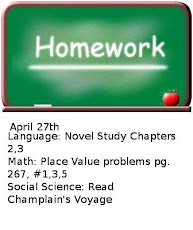 Hi Boys and Girls,
Hi Boys and Girls,This Thursday, April 29th, we will have the pleasure of Michael Wade, the best-selling author of And Then It Happened series, come visit our school. Please take the time to check out his books in our school's library or the local library. Get Reading!
Michael Wade will be speaking to our class second period. Those of you who have read his books will enjoy his humorous and educational style of presentation. He will also personally sign any book you purchase during his visit.
 Sample stories are available online at www.boysbookshelf.com. If you would like to learn more about Michael Wade and his stories, go to kidzreadz.
Sample stories are available online at www.boysbookshelf.com. If you would like to learn more about Michael Wade and his stories, go to kidzreadz.
















